Handiwork
Published 8 years, 8 months pastThe story of a mixer-breaking cookbook, the vault of all practical human knowledge, and what I see when I look at my hands
It all started with an afternoon date. It ended in grease.
Kat and I took a weekend afternoon by ourselves to head down to University Circle, to have some early tea and macarons at Coquette and to see what we might find for a late lunch afterward. We wandered up and down the new Uptown section, chuckling to ourselves over the massive changes since we’d each come to the city. See that bowling alley? Remember when it was a broken parking lot? And when this bookstore was a strip of gravel and weeds?
In the window of the bookstore, I was looking askance at a coloring-book-for-grownups based on “The Walking Dead” when Kat exclaimed, “Oh, that looks fabulous!” It was, I was not surprised to discover, a bakers’ cookbook. Kat loves to bake, mostly for others. In this case, it was Uri Scheft’s Breaking Breads: A New World of Israeli Baking.
The bookstore was closed, so I took a picture of the cover and we moved on, eventually ending up at a ramen shop. I had an unagi don.

I gave Kat the book for her birthday. It’s one of the few things I got right about that celebration this year.
Not long after, Kat had to work at the clinic on a Friday, and asked if I’d make challah from the book so it was ready for dinner that night. I figured, what the heck. What could go wrong? So I hauled out the stand mixer and digital scale, assembled the various ingredients in a line, and started to work.
The challah recipe is sized to make three loaves, because (according to Mr. Scheft) the dough mixes better in large quantities than in small. I was pleased to see the recipe gave all ingredients first as weights, so I didn’t have to convert. I’ve never been great at cups and spoons, especially with baking ingredients, and most especially with flour. I either leave too much air or pack down too hard. A kilogram of flour seemed like a lot, but once I realized it was only a bit more flour than in the overnight bread recipe I’d made several times before, I forged ahead.
Everything fit fairly well into the mixing bowl, which had been my first concern. There was enough room to not have the flour overtop the rim and form a glutenclastic flow over the countertop, at least as long as I started slow. So I did.
Our mixer is a KitchenAid 325W model, bought many years ago and since put to hard service. Kat as I mentioned before, enjoys baking, being good enough at it that she can often free-style in baking and produce wonderful results. I do some baking of my own from time to time, though cooking is more my area of strength. Carolyn has enjoyed learning to bake, and it’s common for her and a friend to decide to make a cake or some cookies when hanging out together, or bake cinnamon rolls for breakfast on a Saturday morning. One of the last things Rebecca did entirely by herself was hold the dough paddle and slowly, methodically eat raw chocolate-chip cookie dough off of it. Joshua isn’t as interested in baking yet, but he’s certainly a fan of paddle-cleaning.
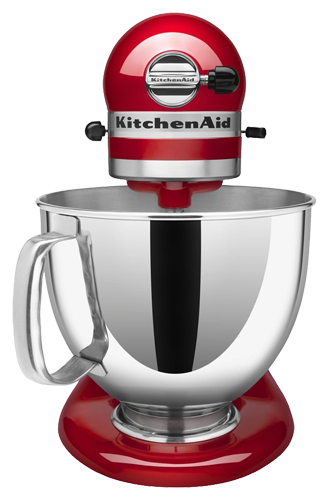
As the challah dough started coming together, it kept climbing the dough hook and slowing the mixer, making the motor whine a bit. I kept shoving it back down, turning the mixer off occasionally to really get it down there. I was faintly smiling over the possibility that the dough would end overtopping the bowl instead of the raw flour when the hook stopped dead and a buzzing noise burst forth from the motor housing.
Uh-oh.
After I’d removed all the dough from the hook and set the bowl aside — the dough was basically done at that point, thankfully — I tried flipping the gear-speed lever back and forth. Nothing but buzzing. It sounded exactly like what you’d expect an unseated gear to sound like, as the teeth buzzed past the gear it was supposed to turn.
There was still bread to make, so I set the mixer aside and got on with the kneading and stretching. Once the dough started its first rise, I went back to the mixer. I figured, what the heck, so I banged on the housing a few times to see if the gear would reseat. And, lo and behold, it started spinning again! There were still some odd sounds, but it seemed to be mostly okay. I decided to clean it off, put it away, and see if the “fix” held.
It was a week later that we found the fix had not, in fact, held. Kat was making babka — from, once again, a recipe in Breaking Breads — for this year’s St. Baldrick’s event in Cleveland Heights when the paddle seized and the buzzing noise once more erupted.
We finished the recipe with a hand mixer (my hand ached for an hour) and I retired to the dining room to search Amazon for a replacement mixer. We could get the same model for about $300, or a more powerful model for more — although that would mean tossing a bunch of accessories, since the more powerful models use a completely different bowl type. There wasn’t, so far as I could find, a stronger motor in the same form factor.
On a whim, I opened a new tab and typed “kitchenaid stand mixer stripped gear” into the search bar, and clicked the “Videos” tab. There were, of course, multiple videos at YouTube, that vast repository of all practical human knowledge. If you want to know the history of stand mixers, you go to Wikipedia. If you want to know how to use or fix them, you go to YouTube.
I started watching the first result, realized it was for a different mixer model, and skipped to the “Up Next” video, which was just what I was looking for: same model and everything. I was a couple of minutes into it when Kat walked into the room saying, “Hey, why don’t you see if maybe you can fix — oh.”
I have not, generally speaking, been what you would call a handy person. Most of my repair attempts made things worse, not better. On occasion, I managed to turn a minor inconvenience into a major expense. I was never particularly ashamed of this, although I was annoyed by the cost. I wasn’t a stranger to manual labor, but I was always better with a keyboard than I was with a hammer — first 88 keys, and then 104.
But for some reason, one of the first things I did to try to manage my grief, late in 2014, was ask my friend Ferrett to help me do some rough carpentry. He had the tools, having taken woodworking classes in the past, and I wanted to put a bookcase in the wall of our finished attic. From that first painful attempt — it took us all day to put together a not-particularly-well-made case — we started getting together once a week or so to just build stuff. Our friend Jim got into the act as well.
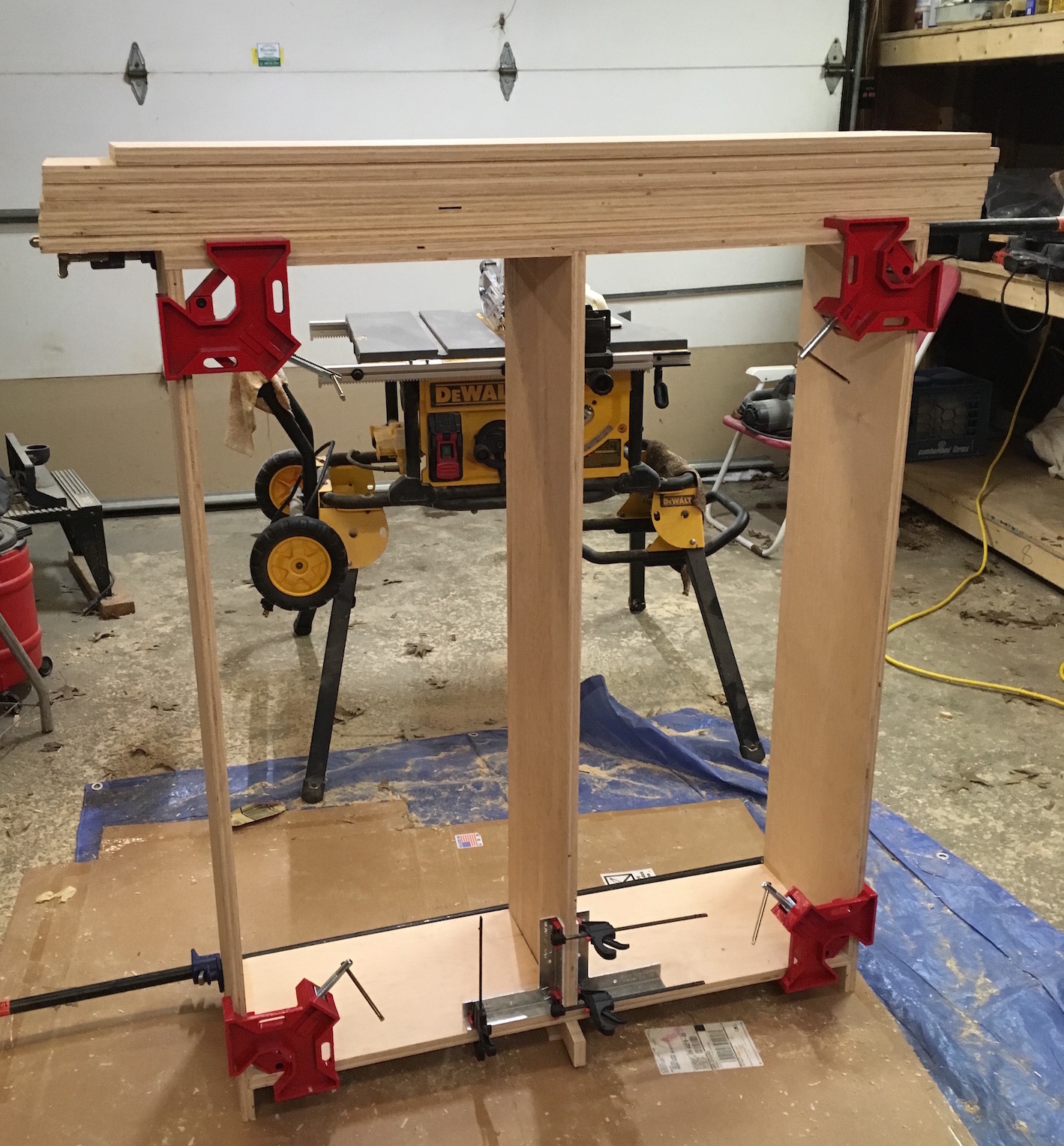
A bookcase here, a shelf there, we’ve gotten better at it. We’ve managed to use every tool in the arsenal, though not always wisely. We’ve made abstruse jokes based on the biscuit cutter being made by Freud. We’ve invented hacks on the spot to make cuts easier and figured out later why things didn’t go quite as intended. We’ve learned that you can never be too rich or have too many clamps. (We depart from standard societal attitudes toward thinness.)
As we’ve progressed, those attitudes and skills have osmosed into regular life. Minor home repair is now a thing I do, and approach with confidence instead of trepidation. No real surprise there: practice at anything, and you’re likely to become better at it. But when the screen door latch broke, I bought a replacement and improvised a way to make it work when the frame bracket and latch didn’t line up. I took a Dremel to my aging laptop stand in order to keep it from scratching desks. I’ve fixed more than one damaged or jammed toy.
So, sure, why not see if the mixer could be fixed with a cheap part replacement? After all, a handyman told me years ago, if it’s already broken, trying to fix it can’t make it any worse. Though I remember thinking to myself that he’d never seen me try to fix things.
I assembled my tools, covered the dining room table in several layers of drop cloth, and started the video. I had real trouble getting out the roll pin that held the planetary in place, but WD-40 and persistence won the day. I had to stop for a while while I searched for surgical gloves, but eventually they turned up and I got into the great globs of grease that keep the gears going. And yes, just as the video had prophesied, the problem was the one plastic gear in the mechanism, nestled in amongst the chain of solid metal gears.
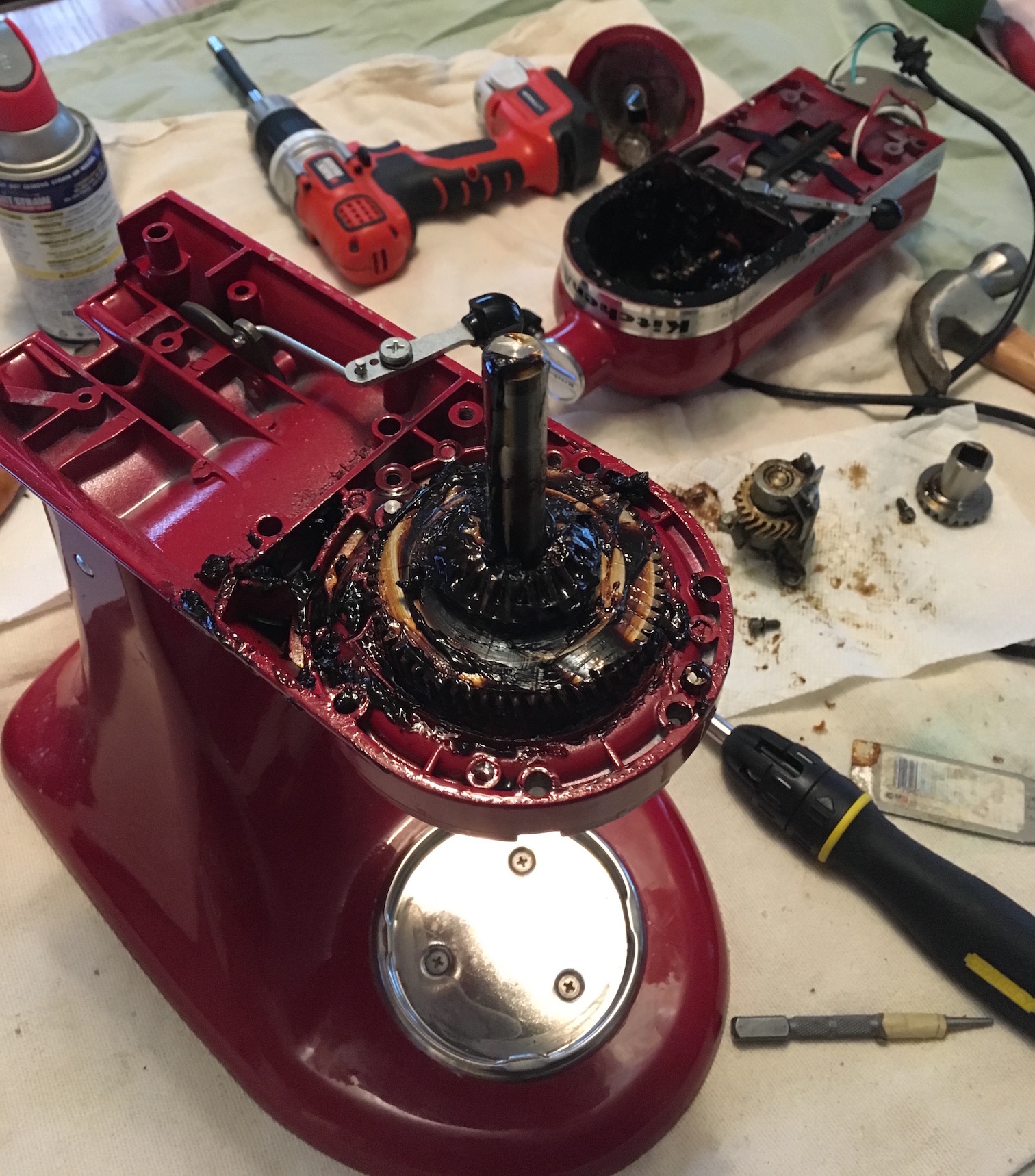
I’m not annoyed by this. That gear, I believe, is intentionally plastic as a last-ditch defense against burning out the motor or shattering a metal gear or the paddle itself, should somethiing seize up the planetary. Think of a metal bar that somehow gets thrust into the paddle, forcing it to stop. Something has to give. A small worm gear acting as a fail-safe is a better option than most others.
I went back to Amazon, this time to order a replacement part. When I found out they were $6.24 each, I ordered three. Until the new worm gears arrive, the various screws and pins I removed are taped in groups to a piece of printer paper, each group labeled according to their points of origin in the mixer assembly. The gear tower pieces I put in a plastic sandwich bag, also taped to the paper, to keep their grease contained.
The broken worm gear I may throw away, or I may keep as a memento.
I am, in my way, pleased with myself about all this. Proud both that I may be able to fix a problem for $7 and an hour or two of time, instead of having to replace an entire appliance for a few hundred dollars; and also for having developed the skills and familiarity to let me try it in the first place. True, I likely couldn’t have done it without YouTube, but in years past, even with YouTube I’d have been hesitant to try, for fear of making it worse, or just being hapless and frustrated by the feeling that if I only knew more, I’d be able to do it right.
Now I know more. I’ve learned — not at internet speed, but at slow, methodical, human speed. I’ve changed, but in ways of my own making instead of ways that circumstance thrust upon me.
When I look at my hands now, I see tools that not only create, but can also repair. They can put to right at least some things that have gone wrong.
There is much more solace in that than I would ever have guessed.
I don’t know, as I write this, whether the mixer will work again. I may reassemble it incorrectly, or even correctly but without success. Sometimes that happens. Sometimes you do everything right, and still have no path to success. But if we do have to junk it after all, I’ll know it wasn’t for lack of first trying to correct the situation.
I will draw pride from that, just as I did from the challah I made for my family and friends, an entire loaf of which was quickly devoured. Just as I have drawn pride from things I’ve written, shaping words that have helped others in ways large and small, and sometimes in ways completely unexpected.
The difference is that when I fix things, I fix for myself, not for others. One small repair at a time, I fix myself.
 We stood in line to get our copies of his books signed, and also to thank him for his Thanksgiving turkey recipe, which quite literally changed how we cook. I also told him
We stood in line to get our copies of his books signed, and also to thank him for his Thanksgiving turkey recipe, which quite literally changed how we cook. I also told him